56 start with W start with W

This book exposes the history and the future of the Wagner Group, Russia’s notorious and secretive mercenary army, revealing details of their operations never documented before. Using extensive leaks, first-hand accounts, and the byzantine paper trail left in the group’s wake, Jack Margolin traces the Wagner Group from its roots as a battlefield rumor to a private military enterprise tens of thousands–strong that eventually comes to threaten Putin himself. He follows individual commanders and foot soldiers within the group as they fight in Ukraine, Syria, and Africa, sometimes alongside fellow military contractors from the United Kingdom and the United States. He shows Wagner mercenaries committing atrocities, plundering oil, diamonds, and gold, and changing the course of conflicts from Europe to Africa in the name of the Kremlin’s strategic aims.
In documenting the Wagner Group’s story up to the dramatic demise of its chief director, Evgeniy Prigozhin, Margolin demonstrates what the Wagner Group represents for not only the future of Putin’s political system but also the privatization of war.

Combining natural, cultural, and environmental history, Walrus explores the intriguing story of an animal that today is on the front lines of conservation debates. John Miller and Louise Miller describe the problems facing walruses even after the twentieth-century bans on nonindigenous walrus hunting—shrinking pack-ice caused by global warming and the exploitation of Arctic oil and gas resources are destroying the animal’s habitat. Wonderfully illustrated with images of walruses in the wild and from art and popular culture, Walrus offers a refreshing account of these large-flippered mammals while also illustrating the ethical dilemmas they embody, from the intensifying conflict between the developed world and indigenous interests to the impact of global warming on arctic animals.

Closing with his death at the Spanish-French border in a desperate flight from the Nazis and Stalin, Walter Benjamin is a concise and concentrated account of a capacious intellect trapped by hostile circumstances.
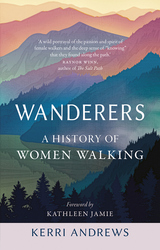
“A wild portrayal of the passion and spirit of female walkers and the deep sense of ‘knowing’ that they found along the path.”—Raynor Winn, author of The Salt Path
“I opened this book and instantly found that I was part of a conversation I didn't want to leave. A dazzling, inspirational history.”—Helen Mort, author of No Map Could Show Them
This is a book about ten women over the past three hundred years who have found walking essential to their sense of themselves, as people and as writers. Wanderers traces their footsteps, from eighteenth-century parson’s daughter Elizabeth Carter—who desired nothing more than to be taken for a vagabond in the wilds of southern England—to modern walker-writers such as Nan Shepherd and Cheryl Strayed. For each, walking was integral, whether it was rambling for miles across the Highlands, like Sarah Stoddart Hazlitt, or pacing novels into being, as Virginia Woolf did around Bloomsbury. Offering a beguiling view of the history of walking, Wanderers guides us through the different ways of seeing—of being—articulated by these ten pathfinding women.

Chapman examines the issues of truthfulness and realism that arise in depictions of war, whether in the supposed truth telling of war documentaries or Hollywood battle scenes that are “more realistic than the real thing.” The book considers films from the U. S., Britain, and Europe, and the national responses to cinematic depictions of particular conflicts. In case studies of such legendary works as Das Boot, Apocalypse Now, and All Quiet on the Western Front, the book parses their dominant narrative themes, ranging from war as a pointless tragedy to combat as an exciting and heroic adventure. But few films, Chapman contends, probe into the deeper ramifications of war—the psychological scars left on the soldier and civilians.
A study of remarkable breadth and scope, War and Film exposes the power of cinema in shaping our perceptions of violent conflict.
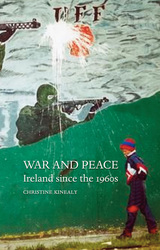
In War and Peace:Ireland Since 1960, Christine Kinealy explores the political triumphs and travails in Ireland over the last five decades. War and Peace provides a thorough and up-to-date account of the unfolding of “The Troubles,” the three decades of violence and social unrest between the Catholic nationalists and the Protestant unionists. In addition, Kinealy examines the Republic of Ireland’s entry into the European Union in 1973, its often contentious relationship with England, and the changes in emigration during the period. Of additional interest to Kinealy is the effect of the women’s movement, which has given rise to the election of two female presidents, proving Ireland’s ability to accept and internalize change.

Black argues strenuously that, in order fully to understand recent warfare, we must discard the Cold War narrative that has until now framed the majority of historical inquiry. By treating conflicts—especially those in and between developing nations—on their own terms, he is able to bring proper attention to the wide varieties of force structures, methods, goals, and military cultures that have been employed in post-World War II battles. Rather than recapitulate the familiar assessments that consider improvements in weaponry or increases in the size of armies without adequately weighing the wider context of their uses in specific wars, Black presents an account of warfare that focuses on the actual tasks the military is ordered to undertake. His global coverage of warfare is unparalleled, and his insistence on the centrality of developing nations to this period of military history brings new knowledge to bear on understudied aspects of recent history.
Black brings the book up to date with considerations of the current "war on terror" and the U.S.-led war in Iraq. Timely and accessible, War since 1945 will be essential to anyone who wants to understand the state of warfare in the present day.
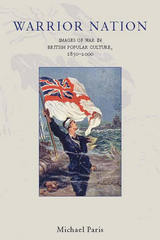
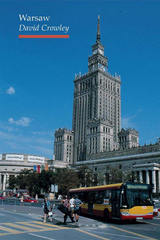
Avoiding the predictable pathways of conventional architectural and urban history writing, David Crowley reveals Warsaw’s visual and urban cultural history through narrative and anecdote, telling stories of the everyday, albeit in extraordinary circumstances. Warsaw examines the ways in which the fabric of the city has been shaped by Communist ideology since the late 1940s, and shows how the city has been spectacularly transformed since the introduction of a market economy in 1989. It also reflects on the ways in which the citizens of Warsaw use and enrich their living areas and the city they inhabit. In Warsaw, the past runs deep, and buildings are marked by myths and curses. David Crowley acts as our guide through this scarred yet uplifting terrain.

Leading entomologist Richard Jones redresses the balance in this enlightening and entertaining guide to the natural and cultural history of these powerful arthropod carnivores. Jones delves into their complex nesting and colony behavior, their fascinating caste system, and their major role at the center of many food webs. Drawing on up-to-date scientific concepts and featuring many striking color illustrations, Jones pushes past the sting, showing exactly why wasps are worthy of greater understanding and appreciation.
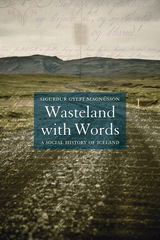
Iceland is an enigmatic island country marked by contradiction: it’s a part of Europe, yet separated from it by the Atlantic Ocean; it’s seemingly inhospitable, yet home to more than 300,000. Wasteland with Words explores these paradoxes to uncover the mystery of Iceland.
In Wasteland with Words Sigurdur Gylfi Magnússon presents a wide-ranging and detailed analysis of the island’s history that examines the evolution and transformation of Icelandic culture while investigating the literary and historical factors that created the rich cultural heritage enjoyed by Icelanders today. Magnússon explains how a nineteenth-century economy based on the industries of fishing and agriculture—one of the poorest in Europe—grew to become a disproportionately large economic power in the late twentieth century, while retaining its strong sense of cultural identity. Bringing the story up to the present, he assesses the recent economic and political collapse of the country and how Iceland has coped. Throughout Magnússon seeks to chart the vast changes in this country’s history through the impact and effect on the Icelandic people themselves.
Up-to-date and fascinating, Wasteland with Words is a comprehensive study of the island’s cultural and historical development, from tiny fishing settlements to a global economic power.

Working women fascinated Munby because they disrupted his Victorian ideal of femininity: their bodies were altered by physical exertion and dirt, and they were also often deformed by disease. Drawing not only on the diaries but also on a vast, untapped archive of documents, photographs, poems and sketches, Watching Hannah is far more than an account of a compulsive observer of working women and a fetishist of hard-working female hands, however. The author analyzes Munby's obsessions in relation to changing definitions of gender, sexual identity and class to reveal wider male preoccupations with femininity, the body, deformity, masculinity and – most of all – sexuality, at a pivotal point in European history.

Miller’s history ranges widely, from ancient times to the present, exploring all the many ways that we’ve rendered water palatable—from boiling it for tea or distilling it as part of alcoholic beverages to piping it from springs, bubbles and all. He covers the histories of water treatment and supply, belief in its medicinal powers, and much more, all supported by fascinating historical illustrations. As access to fresh water becomes an ever more potent problem worldwide, Miller’s book is a fascinating reminder of our long engagement with this most vital fluid.

Restless, protean, fluid, evanescent—despite being a challenge to represent visually, water has gained a striking significance in the art of the twentieth century. This may be due to the fact that it allows for a range of metaphorical meanings, many of which are particularly appropriate to the modern age. Water is not merely a subject of contemporary art, but also a material increasingly used in art-making, giving it a distinct dual presence.
Water and Art probes the ways in which water has gained an unprecedented prominence in modern Western art and seeks to draw connections to its depiction in earlier art forms. David Clarke looks across cultures, finding parallels within contemporary Chinese art, which draws on a cultural tradition in which water has an essential presence and is used as both a subject and a medium. The book features a wealth of images by artists from East and West, including Fu Baoshi, Shi Tao, Wei Zixi, Fang Rending, Leonardo da Vinci, Bernini, Turner, Gericault, Klee, Matisse, Monet, Picasso, Mondrian, and Kandinsky.
Fast-paced, accessible, and comprehensive, Water and Art will appeal to the specialist and the general reader alike, offering fresh perspectives on familiar artists as well as an introduction to others who are less well-known.
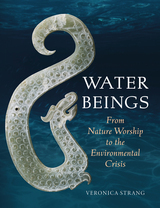
Early human relationships with water were expressed through beliefs in serpentine aquatic deities: rainbow-colored, feathered or horned serpents, giant anacondas, and dragons. Representing the powers of water, these beings were bringers of life and sustenance, world creators, ancestors, guardian spirits, and lawmakers. Worshipped and appeased, they embodied people’s respect for water and its vital role in sustaining all living things. Yet today, though we still recognize that “water is life,” fresh- and saltwater ecosystems have been critically compromised by human activities. This major study of water beings and what has happened to them in different cultural and historical contexts demonstrates how and why some—but not all—societies have moved from worshipping water to wreaking havoc upon it and asks what we can do to turn the tide.
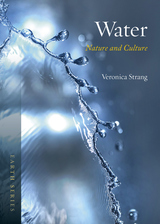
As Strang shows, our attitudes about water and the things that we rely on it for have changed dramatically over time. Once a mystical source of regenerative powers, it has since played various roles as our attitudes about hygiene, health, and disease have developed; as it has become useful to our industry; as agriculture has become ever more complex; and, of course, as we have learned to make money from it. Today water—who controls it, and how—is one of the largest issues facing our society, influencing everything from the welfare of the billions of people living on earth to the vitality of its natural habitats. Balancing history, science, and environmental and cultural studies, Strang offers an important, multi-faceted view of a critical resource.
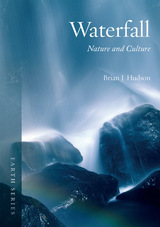
From Niagara Falls in the United States to Angel Falls in Venezuela, Victoria Falls in Africa, and Hannoki Falls in Japan, waterfalls provide some of the world’s loveliest panoramas. With their glistening spray and deafening roar, these astonishing natural wonders attract hordes of people each year who seek out, with cameras in hand, these terrifying and sublime examples of natural beauty.
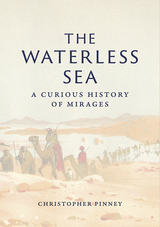
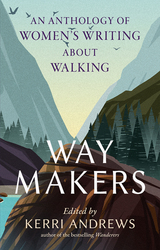
The follow-up to the celebrated Wanderers, Kerri Andrews’s Way Makers is the first anthology of women’s writing about walking. Moving from Elizabeth Carter’s correspondence with Catherine Talbot in the eighteenth century through to Merryn Glover in the present day, and across poetry, letters, diaries, novels, and more, this anthology traces a long tradition of women’s walking literature. Walking is, for the women included in this anthology, a source of creativity and comfort; it is a means of expressing grief, longing, and desire. It is also a complicated activity: it represents freedom but is also sometimes tinged with danger and fear. What cannot be denied any longer is that walking was, and continues to be, an activity full of physical and emotional significance for women: this anthology is a testament to the rich literary heritage created by generations of women walker-writers over the centuries.
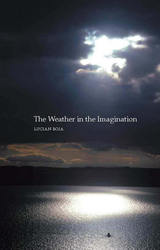
Boia here examines the cultural influence of weather through the lens of anthropology and psychology, history, and catastrophe. He first investigates how human diversity is linked to weather and why people differ according to their native climates. He then looks at how climate can explain the dynamics of historical progress and the rise and fall of civilizations, citing how Nazis used it to justify the superiority of the "Aryan" race. And what can destroy or induce panic in a society more effectively than a good climatic jolt? Boia investigates the social upheaval caused by catastrophic weather conditions, citing the most gripping example in human history, the Biblical Flood.
The Weather in the Imagination is a thought-provoking chronicle of how humans throughout history have been bewildered, infuriated, and often terrified by the weather.
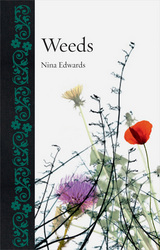
We spray them, pluck them, and bury them under mulch; and we curse their resilience when they spring back into place. To most of us, weeds are a nuisance, not worth the dirt they are growing in. But the fact is weeds are a plant just like any other, and it is only we who designate them as a weed or not, as a plant we will dote over or one we will tear out of the earth with abandon. And as Nina Edwards shows in this history, that designation is constantly changing. Balancing popular history with botanical science, she tells the story of the lowly, but proud, weed.
As Edwards shows, the idea of the weed is a slippery one, constantly changing under different needs, fashions, and contexts. In a tightly controlled field of corn, a scarlet poppy is a bright red intruder, but in other parts of the world it is an important cultural symbol, a potent and lucrative pharmaceutical source, or simply a beautiful, lakeside ornament. What we consider a pest—Aristolochia Rotunda, or “fat hen”—was, in Neolithic times, a staple crop, its seeds an important source of nutrition. Sprinkled with personal anecdotes and loads of useful information, Weeds sketches history after history of the fashions and attitudes that have shaped our gardens, showing us that it is just as important what we keep out of them as what we put in, and that just because we despise one species does not mean that there haven’t been others whose very lives have depended on it.
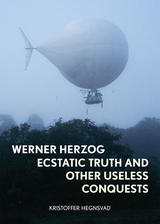
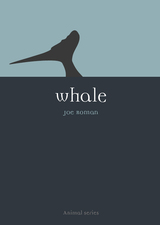
From the Biblical prophet Jonah to Moby-Dick to recent discoveries of cetacean songs and culture, Roman examines the whale's role in history, art, literature, commerce, and science. Whale features vibrant illustrations, ranging from Stone Age carvings to full-color underwater photographs, which vividly bring to life the rich symbolic meanings surrounding the whale. Roman also examines the ecological and evolutionary history of the whale as well as contemporary issues of conservation. Whale is an engaging volume that will appeal to all those interested in the important role that these kings of the ocean have played in human culture.

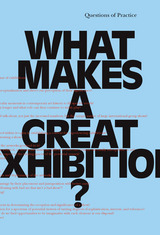
For better or worse, museums are changing from forbidding bastions of rare art into audience-friendly institutions that often specialize in “blockbuster” exhibitions designed to draw crowds. But in the midst of this sea change, one largely unanswered question stands out: “What makes a great exhibition?” Some of the world’s leading curators and art historians try to answer this question here, as they examine the elements of a museum exhibition from every angle.
What Makes a Great Exhibition? investigates the challenges facing American and European contemporary art in particular, exploring such issues as group exhibitions, video and craft, and the ways that architecture influences the nature of the exhibitions under its roof. The distinguished contributors address diverse topics, including Studio Museum in Harlem director Thelma Golden’s examination of ethnically-focused exhibitions; and Robert Storr, director of the 2007 Venice Biennale and formerly of the Museum of Modern Art, on the meaning of “exhibition and “exhibitionmaker.”
A thought-provoking volume on the practice of curatorial work and the mission of modern museums, What Makes A Great Exhibition? will be indispensable reading for all art professionals and scholars working today.

John T. Lang begins by grounding the debates in the biology and chemistry behind genetic modification. He then shows how food is deeply imbued with religious, social, cultural, and ethical meanings, which bring a variety of non-scientific issues to the forefront and make genetically modified food a proxy for larger debates regarding topics such as globalization and corporate greed. Centrally, he contends that the controversies surrounding the technology reflect ongoing tensions between social and political power, democratic practice, and corporate responsibility. As Lang illustrates, while modern, mechanized, and genetically enhanced production has given the consumer an unprecedented variety and quantity of food, it has also introduced new social and environmental vulnerabilities and uncertainties into the global food system.
Bringing together science, politics, economics, and culture, this book offers a deeply informed look at an important aspect of modern agriculture. It will prove invaluable to anyone who shops at the grocery store, whether they like the benefits that genetic modification has to offer or fear that nature is something we should have left alone.
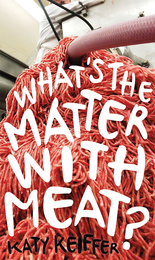
What’s the Matter with Meat? explores everything from labor issues to genetic manipulation to animal welfare to environmental degradation, illustrating just how the industrial model for meat production conjures up huge quantities of cheap meat even as it shifts many of the real costs onto the taxpayer. She describes practices few of us know about, such as land grabs in which predator companies acquire property in foreign countries for meat production, often driving out local farmers. She shows how industry consolidation entrenches cost-effective but harmful practices, creating monopolies that force competitors out of business, drive down labor costs, erode workers’ rights, and exert extraordinary power over nearby communities.
Keiffer demonstrates with irrefutable force that the current model for meat production—adopted worldwide—is simply not sustainable and will soon exhaust the planet’s resources. A hard-hitting critique of the meat industry and its harmful effects, this book shows us just how important it is to care about where our food comes from, to support alternative production systems, and to stop those practices that are ruining our planet in the service of the burger and the nugget.
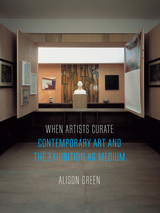
Rather than portraying artist curators as exceptional or rare, Green establishes the fact that artists curate all the time and in all kinds of places: in galleries and in museums, in studios, in borrowed spaces such as shopfronts or industrial buildings, in front rooms and front windows, in zoos or concert halls, on streets and in nature. Seen from the perspective of artists, showing is a part of making art. Once this idea is understood, the story of art starts to look very different. Beautifully illustrated and featuring in-depth explorations of the work of revered artist curators like Daniel Buren, Goshka Macuga, Thomas Hirschhorn, Rosemarie Trockel, Hito Steyerl, Andy Warhol, and Félix González-Torres, When Artists Curate will change the way we think about and look at exhibitions.
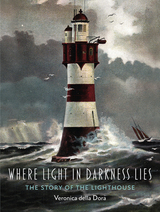
Suspended between sea and sky, battered by the waves and the wind, lighthouses mark the battle lines between the elements. They guard the boundaries between the solid human world and the primordial chaos of the waters; between stability and instability; between the known and the unknown. As such, they have a strange, universal appeal that few other manmade structures possess.
Engineered to draw the gaze of sailors, lighthouses have likewise long attracted the attention of soldiers and saints, artists and poets, novelists and filmmakers, colonizers and migrants, and, today more than ever, heritage tourists and developers. Their evocative locations, isolation, and resilience, have turned these structures into complex metaphors, magnets for stories. This book explores the rich story of the lighthouse in the human imagination.
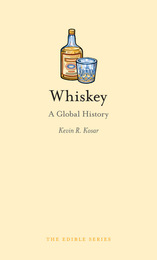
A Manhattan or a Sazerac; neat, on the rocks, or with a splash of soda—no matter how it’s served up, whiskey is synonymous with the poet’s inspiration and the devil’s spirit. Be it bourbon, rye, corn, Irish, or Scotch, whiskey has an infamous and celebrated history from a sometimes lethal, herb-infused concoction to a high-quality, meticulously crafted liquor.
In Whiskey, Kevin R. Kosardelivers an informative, concise narrative of the drink’s history, from its obscure medieval origins to the globally traded product that it is today. Focusing on three nations—Scotland, Ireland, and America—Kosarcharts how the technique of distillation moved from ancient Egypt to the British Isles. Contrary to popular claims, there were no good old days of whiskey: before the twentieth century, consumers could never be sure just what was being poured in their cup—unscrupulous profiteers could distill anything into booze and pawn it off as whiskey. Eventually, government and industry established legal definitions of what whiskey is and how it could be made, allowing for the distinctive styles of whiskey known today.
Whiskey explains what whiskey is, how it is made, and how the types of whiskey differ. With a list of suggested brands and classic cocktail recipes for the thirsty reader, this book is perfect for drink and food enthusiasts and history lovers alike.
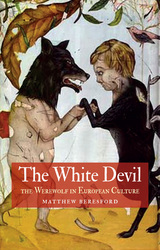
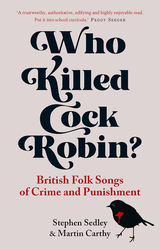
At the heart of traditional songs rest the concerns of ordinary people. And folk throughout the centuries have found themselves entangled with the law: abiding by it, breaking it, and being caught and punished by it. Who Killed Cock Robin? is an anthology of just such songs compiled by one of Britain’s most senior judges, Stephen Sedley, and best-loved folk singers, Martin Carthy. The songs collected here are drawn from manuscripts, broadsides, and oral tradition. They are grouped according to the various categories of crime and punishment, from Poaching to the Gallows. Each section contains a historical introduction, and every song is presented with a melody, lyrics, and an illuminating commentary that explores its origins and sources. Together, they present unique, sometimes comic, often tragic, and always colorful insight into the past, while preserving an important body of song for future generations.
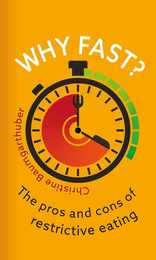
Fasting from food is a controversial, dangerous, and yet utterly normal human practice. In Why Fast?, Christine Baumgarthuber engages our fascination with restrictive eating in cultural history. If fasting offers few health benefits, why do people fast? Why have we always fasted? Does fasting speak to something deep and immutable within us? Why are our bodies so well adapted to intermittent fasting? And, what might this ancient, ascetic ritual offer us today? Thoughtful and considered, Why Fast? is a sober reconsideration of a contentious practice.
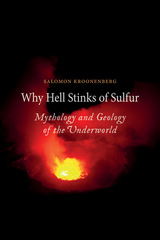

Black examines several major modern wars in their historical contexts, taking into account cultural differences and various conflict theories. He analyzes the three main types of war—between cultures, within cultures, and civil—and explores the problems of defining war. Black's investigation inspires fascinating questions such as: Do wars reflect the bellicosity in societies and states, or do they largely arise as a result of a diplomatic breakdown? How closely is war linked to changes in the nature of warfare, the international system, or the internal character of states? Black also considers contemporary situations and evaluates the possible course of future wars. Offering a valuable and thought-provoking analysis on the causes of war and conflicts, Why Wars Happen will interest historians and readers of military history alike.
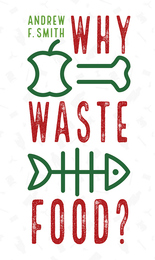
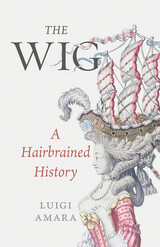
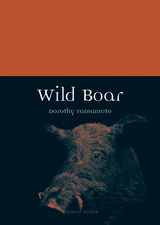
Dorothy Yamamoto takes us from the dense streets of Tokyo to the Forest of Dean in England to show how wild boars have survived in a variety of settings. She also explores the ways that they have figured in our imaginations, whether as the iconic Calydonian Boar from Ancient Greece, the White Boar of Richard III, or any of the other forms it has taken in mythology and lore. As she shows, the boar has been an especially prominent figure in hunting culture, and as such it has often been construed as a larger-than-life monster that only the most heroic of us can take down, a misperception that has threatened the boar’s survival in many parts of the world. With an illuminating combination of natural with cultural history, this book paints a vibrant portrait of a unique and often misunderstood animal.
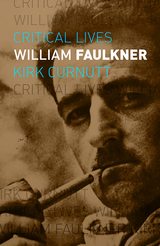
Beginning with the 1929 publication of The Sound and the Fury (his fourth novel), Faulkner produced a dazzling series of masterpieces in rapid order, including As I Lay Dying; Sanctuary; Light in August; Absalom, Absalom!; and Go Down, Moses—novels and stories that alternately exhilarated and exasperated critics and left readers gasping to keep pace with his storytelling innovations. Transforming his hometown of Oxford, Mississippi, into the fictional Yoknapatawpha County, Faulkner created his own microcosm in which compassion and personal honor struggle to stand up to the violence, lust, and greed of the modern world.
As prolific as Faulkner was, however, the career of this Nobel laureate was neither easy nor carefree. He was perpetually strapped for cash, burdened with supporting a large extended family, ambivalent toward his marriage, and vulnerable to alcoholism. Honoring both the man and the artist, this book examines how Faulkner strained to balance these pressures and pursue his literary vision with single-minded determination.

Along with Jack Kerouac and Allen Ginsberg, William S. Burroughs (1914––97) is an iconic figure of the Beat generation. In William S. Burroughs, Phil Baker investigates this cult writer’s life and work—from small-town Kansas to New York in the ’40s, Mexico and the South American jungle, to Tangier and the writing of Naked Lunch, to Paris and the Beat Hotel, and ’60s London—alongside Burrough’s self-portrayal as an explorer of inner space, reporting back from the frontiers of experience.
After accidentally shooting his wife in 1951, Burroughs felt his destiny as a writer was bound up with a struggle to come to terms with the “Ugly Spirit” that had possessed him. In this fascinating biography, Baker explores how Burroughs’s early absorption in psychoanalysis shifted through Scientology, demonology, and Native American mysticism, eventually leading Burroughs to believe that he lived in an increasingly magical universe, where he sent curses and operated a “wishing machine.” His lifelong preoccupation with freedom and its opposites—forms of control or addiction—coupled with the globally paranoid vision of his work can be seen to evolve into a larger ecological concern, exemplified in his idea of a divide between decent people or “Johnsons” and those who impose themselves upon others, wrecking the planet in the process.
Drawing on newly available material, and rooted in Burroughs’s vulnerable emotional life and seminal friendships, this insightful and revealing study provides a powerful and lucid account of his career and significance.
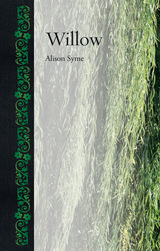
Syme examines the manifold practical uses of the tree, discussing the application of its bark in medicines, its production as an energy crop that produces biofuel and charcoal, and its employment for soil stabilization and other environmental protection schemes. But despite all the functional uses of willows, she argues, we must also heed the lessons they teach about living, dying, and enriching our world. Looking at the roles that willows have played in folklore, religion, and art, she parses their connections to grief and joy, toil and play, necessity and ornament. Filled with one hundred images, Willow is a seamless account of the singular place the willow holds in our culture.
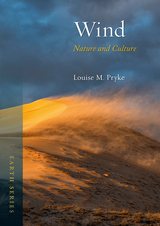
By turns creative and destructive, wind spreads seeds, fills sails, and disperses the energy of the sun. Worshipped since antiquity, wind has molded planets, determined battles, and shaped the evolution of life on earth—yet this invisible element remains intangible and unpredictable. In this book, Louise M. Pryke explores wind’s natural history as well as its cultural life in myth, religion, art, and literature. Beyond these ancient imaginings, Pryke also traces how wind inspired modern scientific innovations and appeared in artistic works as diverse as the art of Van Gogh, the poetry of Keats, and the blockbuster film.
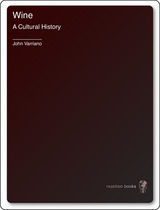
For oenophiles, casual wine-drinkers, and aesthetes alike, an informative and entertaining history sure to delight even the most sensitive palates.
From celebrations of Bacchus in ancient Rome to the Last Supper and casual dinner parties, wine has long been a key component of festivities, ceremonies, and celebrations. Made by almost every civilization throughout history, in every part of the world, wine has been used in religious ceremonies, inspired artists and writers, been employed as a healing medicine, and, most often, sipped as a way to relax with a gathering of friends. Yet, like all other forms of alcohol, wine has also had its critics, who condemn it for the drunkenness and bad behavior that arise with its overconsumption. Wine can render you tongue-tied or philosophical; it can heal wounds or damage health; it can bring society together or rend it. In this fascinating cultural history of wine, John Varriano takes us on a tour of wine’s lively story, revealing the polarizing effect wine has had on society and culture through the ages.
From its origins in ancient Egypt and Mesopotamia to the expanding contemporary industries in Australia, New Zealand, and America, Varriano examines how wine is made and how it has been used in rituals, revelries, and remedies throughout history. In addition, he investigates the history of wine’s transformative effects on body and soul in art, literature, and science from the mosaics of ancient Rome to the poetry of Dickinson and Neruda and the paintings of Caravaggio and Manet.
A spirited exploration, this book will delight lovers of sauvignon blanc or pinot noir, as well as those who are interested in the rich history of human creativity and consumption.
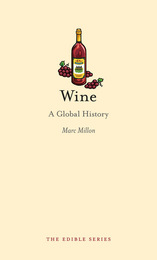
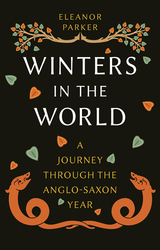
Winters in the World is a beautifully observed journey through the cycle of the year in Anglo-Saxon England, exploring the festivals, customs, and traditions linked to the different seasons. Drawing on a wide variety of source material, including poetry, histories, and religious literature, Eleanor Parker investigates how Anglo-Saxons felt about the annual passing of the seasons and the profound relationship they saw between human life and the rhythms of nature. Many of the festivals celebrated in the United Kingdom today have their roots in the Anglo-Saxon period, and this book traces their surprising history while unearthing traditions now long forgotten. It celebrates some of the finest treasures of medieval literature and provides an imaginative connection to the Anglo-Saxon world.
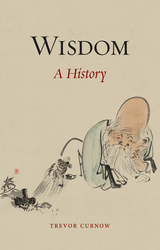
Drawing on examples from a diversity of eras and places—from ancient Egypt to medieval Europe to modern Africa—Curnow explores the ways we have sought to overcome the problems posed by our existence, such as love and death, with a steadfast wisdom. He shows how many cultures have attributed wisdom to deities such as Apollo, Odin, and Sarasvati, and how, especially, we have placed it within the vehicle of the proverb, which has safeguarded its lessons throughout time and across cultures.
Including a collection of one hundred sayings that offer a rich record of wisdom’s reification, this history gives new insight into what wisdom actually is and where we might find it.
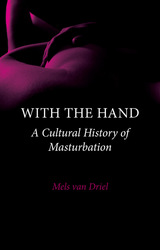
People call it everything from “walking your dog” to “scratching your bean.” Women usually do it at home. Men, it sometimes seems, do it everywhere. Some people think it’s healthy; others think it is a sin that will send you straight to hell. But while many people declare that everyone’s doing it, no one actually talks about it—outside the pages of Cosmo, masturbation is among the most taboo of topics, not suitable for polite society or public conversation.
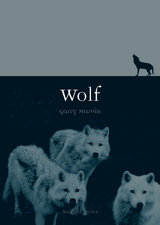

In Women Artists in Midcentury America, readers embark on a journey spanning two decades, delving into the evolving social and artistic landscapes through the lens of all-women exhibitions. These groundbreaking projects courageously confronted issues of sexual and racial discrimination, igniting profound discussions about women’s roles within modernism and democracy. Looking closely at the inception and reception of these exhibitions by curators, artists, critics, and the public, the book sheds light on the remarkable contributions of numerous artists, from Ruth Asawa to Marguerite Zorach. By foregrounding the accomplishments of women artists during a conservative period overshadowed by the feminist movement of the 1970s, Daniel Belasco provides a fresh perspective on the complex history of women’s art in America and its significance in the broader art world.

Dönmez-Colin examines prevalent cinematic archetypes, including the naïve country girl who is deceived and dishonored, or the devious seductress who destroys the sanctity of marriage, and looks well at controversial elements such as screen rape, which, feminist film critics claim, caters to male voyeurism. She also discusses recurring themes, such as the myths of femininity, the endorsement of polygamy and the obsession with male children, as well as the most common stereotypes, depicting women as mothers, wives and daughters.
Given the diversity of cultures, rather than viewing national cinemas as aspects of a single development, the author focuses on individual histories, traditions and social and economic circumstances as points of reference, which are examined in the context of social and political evolution and the status of women within Islam.
Women, Islam and Cinema is a much-needed and timely work that will appeal to the curious reader as well as to the student of film.

Barrels—we rarely acknowledge their importance, but without them we would be missing out on some of the world’s finest beverages—most notably whiskies and wines—and of course for over two thousand years they’ve been used to store, transport, and age an incredibly diverse array of provisions around the globe. In this comprehensive and wide-ranging book, Henry Work tells the intriguing story of the significant and ever-evolving role wooden barrels have played during the last two millennia, revealing how the history of the barrel parallels that of technology at large.
Exploring how barrels adapted to the requirements of the world’s changing economy, Work journeys back to the barrel’s initial development, describing how the Celtic tribes of Northern Europe first crafted them in the first millennia BCE. He shows how barrels became intrinsically linked to the use of wood and ships and grew into a vital and flexible component of the shipping industry, used to transport not only wine and beer, but also nails, explosives, and even Tabasco sauce. Going beyond the shipping of goods, Work discusses the many uses of this cylindrical container and its relations—including its smaller cousin, the keg—and examines the process of aging different types of alcohol. He also looks at how barrels have survived under threat from today’s plastics, cardboards, and metals.
Offering a new way of thinking about one of the most enduring and successful products in history, Wood, Whiskey and Wine will be a must-read for everyone from technology buffs to beverage aficionados who wish to better understand that evasive depth of flavor.
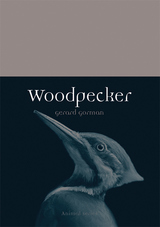
In this charming volume, avian expert Gerard Gorman delves into the natural and cultural history of woodpeckers, exploring their origins and habitats and the ways they have fascinated humankind throughout history. Gorman finds woodpeckers everywhere—from ancient Babylon, Greece, and Rome, to the jungles of Amazonia and Borneo, to our modern-day Woody Woodpecker cartoon. Richly illustrated with images from both nature and culture, Woodpecker will appeal to everyone who is interested in these extraordinary birds.
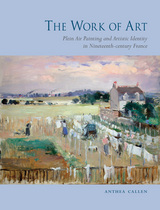
Putting the work of artists from Courbet and Cézanne to Pissaro under a microscope, Callen examines modes of self-representation and painting methods, paying particular attention to the painters’ touch and mark-making. Using innovative methods of analysis, she provides new and intriguing ways of understanding material practice within its historical moment and the cultural meanings it generates. Richly illustrated with 180 color and black-and-white images, The Work of Art offers fresh insights into the development of avant-garde French painting and the concept of the modern artist.
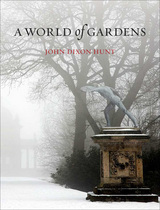
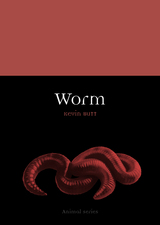
This book celebrates the mysterious world of worms from gardens to toothaches and beyond. Kevin Butt introduces all manner of worms, including many that bear only superficial resemblance to our limbless, sinuous friends in the dirt. To trace the intimate history between worms and people, he discusses worms that live in bodies, soil, and water as well as worms from literature and mythology. Throughout the ages, worms have been portrayed as benign, even beautiful, yet at other times spitefully ostracized as deadly creatures. This richly illustrated book looks at the microscopic and the very large indeed, asking what the future holds for both human- and worm-kind.
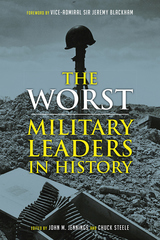
For this book, fifteen distinguished historians were given a deceptively simple task: identify their choice for the worst military leader in history and then explain why theirs is the worst.
From the clueless Conrad von Hötzendorf and George A. Custer to the criminal Baron Roman F. von Ungern-Sternberg and the bungling Garnet Wolseley, this book presents a rogues’ gallery of military incompetents. Rather than merely rehashing biographical details, the contributors take an original and unconventional look at military leadership in a way that appeals to both specialists and general readers alike.
While there are plenty of books that analyze the keys to success, The Worst Military Leaders in History offers lessons of failure to avoid. In other words, this book is a “how-not-to” guide to leadership.
READERS
Browse our collection.
PUBLISHERS
See BiblioVault's publisher services.
STUDENT SERVICES
Files for college accessibility offices.
UChicago Accessibility Resources
home | accessibility | search | about | contact us
BiblioVault ® 2001 - 2024
The University of Chicago Press









